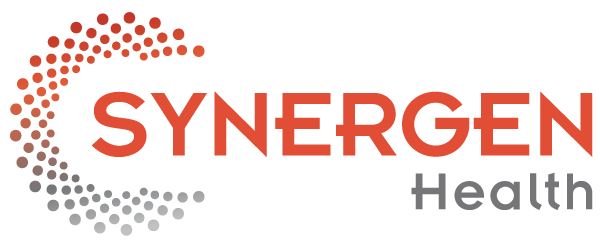 Just as regular health check-ups are essential for maintaining personal well-being, a thorough evaluation of your organization’s operational processes is crucial for enhancing its financial vitality.
Just as regular health check-ups are essential for maintaining personal well-being, a thorough evaluation of your organization’s operational processes is crucial for enhancing its financial vitality.
If you aim to improve your revenue cycle, a crucial first step is understanding where your organization currently stands, which is best achieved through a comprehensive ‘health check-up’ of your existing processes and operations.
By closely examining these five key metrics, you can effectively measure the health of your operations, pinpoint areas requiring attention, and implement strategies that foster robust financial performance.
1. Reduction in Denials
Claim denials are a persistent and growing barrier to effective revenue cycle management, often leading to lost revenue and increased administrative costs. Because of this, when evaluating the health of a revenue cycle, the first metric we look at is the percentage of claims denied compared to the total claims submitted. Once you determine a baseline, measuring improvements can be seen in the percentage reduction of claim denials over a specific period.
A high denied claims rate indicates underlying issues within the revenue cycle, including inaccurate coding, insufficient documentation, or non-compliance with payer policies. To add fuel to the fire, a high denial rate often necessitates additional resources to manage and rework denied claims, which can strain an organization’s financial and human resources.
Monitoring this metric helps identify and address these problems. AI-driven RCM solutions can identify common reasons for denials and enable proactive adjustments in the claims submission process.
2. Days Spent in Accounts Receivable (A/R)
This KPI measures the average number of days it takes for an organization to get paid and directly reflects the efficiency and effectiveness of the billing and collections processes.
A lower average number of days in A/R indicates that an organization is quickly turning services into payments, which is essential for maintaining a healthy cash flow. Efficient billing practices, accurate coding, timely submission, and proactive follow-up on outstanding claims contribute to lower A/R days.
Conversely, a higher number of days in A/R often signals problems in the revenue cycle, such as delays in claim submission, errors in billing, insufficient follow-up on unpaid claims, or issues in payer contract negotiations.
Strategies to improve days in A/R include:
- Enhancing patient eligibility verification
- Optimizing charge capture processes
- Ensuring accurate and timely claim submissions
- Employing effective denial management strategies
Additionally, leveraging technology such as automated billing systems and AI-powered analytics can significantly reduce days in A/R and streamline revenue cycle processes.
3. Clean Claim Rate
A clean claim rate reflects the percentage of claims paid on the first submission without any needed corrections or re-submissions.
A high clean claim rate (CCR) points to effective internal billing processes, leading to faster reimbursements, reduced administrative costs, and minimal time spent reworking claims.
On the other hand, a low clean claim rate is a sign of potential problems within the revenue cycle. Similar to the issues mentioned in metric #1, a low clean claim rate usually stems from incorrect coding, inadequate documentation, or errors in patient information.
Strategies to enhance CCR include:
- Investing in staff training for accurate coding and billing
- Implementing rigorous pre-claim review processes to catch errors before submission
- Regularly reviewing and analyzing claim denials
- Utilizing advanced software to detect errors and automate processes
4. First Pass Payment Rate
A first-pass payment rate measures the percentage of claims paid in full the first time an organization submits it to a payer.
A high first-pass payment rate indicates a well-functioning revenue cycle and signifies that claims are accurate, comply with payer rules, and are submitted promptly—leading to quicker reimbursements, improved cash flow, and reduced administrative burden.
A low first-pass payment rate points to significant issues within the RCM process. Like the other metrics discussed, it often indicates problems like coding errors, incomplete documentation, or failure to adhere to specific payer rules and regulations. These issues result in claim denials or partial payments, necessitating additional time and resources to address and rectify the errors for resubmission or appeal.
To improve and maintain a high first-pass payment rate, healthcare organizations should focus on several key areas:
- Ensuring accurate and complete patient information
- Adhering to coding standards and staying updated with payer policies
- Conducting thorough pre-claim audits to catch potential errors before submission
- Regular training and education for billing staff
5. Average Number of Claims Resolved in 120 Days
The average of claims resolved in 120 days measures the percentage of fully resolved or paid claims within 120 days. This metric provides a long-term view of the effectiveness of a healthcare organization’s billing and claims management processes.
The goal is to have claims paid upon first claim submission as soon as possible (30 days or less). Monitoring aged receivables by payor and the average days to receive payment can be an indication of issues within the revenue cycle process.
If you are experiencing a majority of your claims getting paid in 120+ days this usually stems from various factors, including errors in coding, inadequate documentation, slow payer response, or inefficiencies in denial management. Extended resolution times also lead to a backlog of unpaid claims, which can severely impact an organization’s financial stability by tying up revenue in unresolved claims.
Organizations should focus on streamlining the claims process and improving the claims’ tracking and management to improve this metric. AI-powered billing software and technologies are beneficial in these instances.
Where Does Your Revenue Cycle Stand?
The first step in improving any of the metrics mentioned is understanding the current state of your revenue cycle. This creates a baseline for all improvements to be measured going forward. Identifying issues and areas for improvement is crucial to creating a unique plan to improve overall performance.
We offer a customized RCM roadmap that analyzes your current operational and financial performance—request yours.

